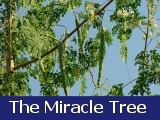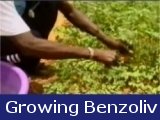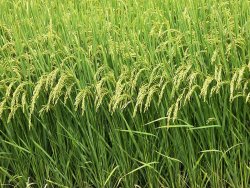
|
Contact usUnited CaribbeanFood For Life
Barbados Super Foods
Guyana Agro/Eco TourismOrganic Super Fruits IndexSt Lucia Super FruitsDominica Super ChocolateSuriname Super SeedsGrenada Super SpiceUCT ProjectsUCT Agricultural CurriculumCaribbean Relief
Alternative Animal Fodder |
home >> the
miracle tree>>food for
life caribbean>>rice Food for Life - Caribbean - Rice
Today, rice is the second largest crop in Guyana's agricultural industry, second only to sugarcane in production. ... The country produced more than 1 million tons of paddy in 2019, its second-largest production year on record. Annual average yields for rice production are continuing to increase steadily. Rice is enjoyed by many in Guyana; Guyanese eat it with almost anything. They enjoy making delicious foods with it such as fried rice, cook-up rice, white pudding, sweet rice; the rice can also be eaten with vegetables or dhal or with various stews like stewed fish, chicken, shrimp, etc. Two types of rice known in Guyana are brown rice and white rice. However, in 1999, a quality and tasteful rice called the Karibee Rice was established. Extracts taken from www.thingsguyana.com In Guyana, rice is an important source of livelihood. Approximately 6,020 farmers produce rice in several regions throughout Guyana. There are 43 licensed rice millers and 22 registered exporters of rice. Rice accounts for 3.3 per cent of Guyana’s total Gross Domestic Product (GDP) and 20.5 per cent of agriculture GDP. Unlike its Asian counterparts, Guyana’s rice trade has not been set back by COVID-19. The Guyana Rice Development Board (GRDB) reported a 13 per cent increase in rice exports between January and May 2020 as compared to the corresponding period in 2019. But the economic promise of rice to the population of Guyana is neither gender-blind nor environmentally neutral. Guyana’s high vulnerability to climate change, particularly in its coastal areas, coupled with limited opportunities for women in agriculture, create uncertainty, instability and inefficiency in a number of areas. If rectified, these can fuel a more economically and environmentally resilient future for the Guyanese rice industry. Information sourced from www.forbes.com UCT is seeking to purchase land in Guyana for our rice production for the Food for Life Caribbean. An island in the Essequibo River or land on the river bank have been identified which will serve as a rice plantation as well as an Agro/Eco Mission Holiday Destination. Guyana’s extensive forests, mountains, waterfalls, and wide array of wildlife make it an ideal destination for eco-tourism. The country boasts the highest single-drop waterfall in the world, a multi-purpose rainforest reserve, and a beach where endangered sea turtles come to nest every year.
|
|
A DROP OF HOPE
GROW AND GO CURRICULUM
|
| Copyright © 2024 www.UnitedCaribbean.com. All rights reserved. Disclaimer Click to Contact us |



















































